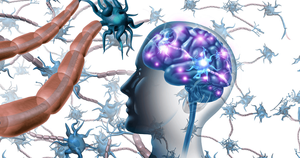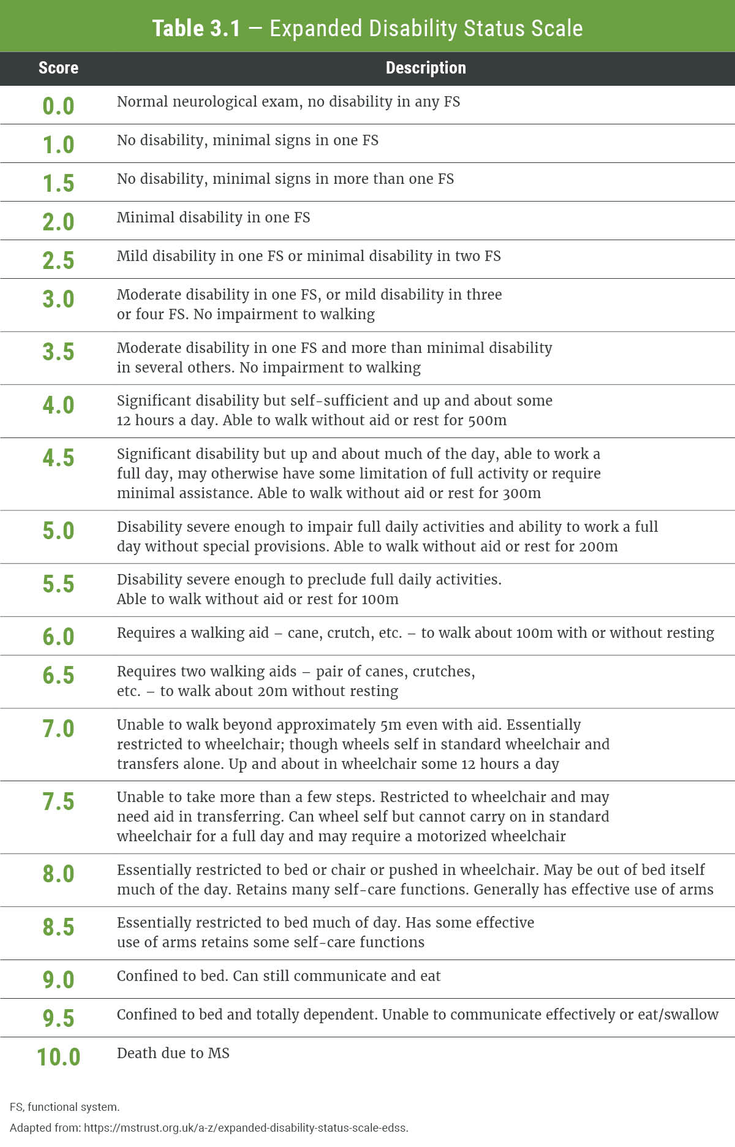Definition and Classification
Introduction
Multiple sclerosis (MS) is an immune-mediated, chronic, neuroinflammatory, neurodegenerative disease that causes demyelination and neuronal injury in the central nervous system (CNS). It is characterized by the accumulation of multiple lesions in the white and gray matter of the CNS, from which its name derives (sclerosis meaning hardening or scarring). The formation of some CNS lesions is typically accompanied by neurological symptoms, whose presentation and duration is diverse and changes as the disease progresses. Based on the symptom type and timing, multiple sclerosis can be sub-divided into several subtypes:
- Clinically Isolated Syndrome (CIS)
- Relapsing-Remitting MS (RRMS)
- Secondary Progressive MS (SPMS)
- Primary Progressive MS (PPMS)
Clinically isolated syndrome is a term typically applied to a single neurological “attack”, which is typically monofocal and may include optic neuritis, partial transverse myelitis (spinal cord inflammation), or a brainstem-…
To continue reading
Log in or register to continue reading. It's free!
OR
By signing up to create an account, I accept Healio's Terms of Use and Privacy Policy.
Introduction
Multiple sclerosis (MS) is an immune-mediated, chronic, neuroinflammatory, neurodegenerative disease that causes demyelination and neuronal injury in the central nervous system (CNS). It is characterized by the accumulation of multiple lesions in the white and gray matter of the CNS, from which its name derives (sclerosis meaning hardening or scarring). The formation of some CNS lesions is typically accompanied by neurological symptoms, whose presentation and duration is diverse and changes as the disease progresses. Based on the symptom type and timing, multiple sclerosis can be sub-divided into several subtypes:
- Clinically Isolated Syndrome (CIS)
- Relapsing-Remitting MS (RRMS)
- Secondary Progressive MS (SPMS)
- Primary Progressive MS (PPMS)
Clinically isolated syndrome is a term typically applied to a single neurological “attack”, which is typically monofocal and may include optic neuritis, partial transverse myelitis (spinal cord inflammation), or a brainstem-cerebellar syndrome (e.g., diplopia, dysarthria, ataxic hemiparesis). The majority of people who experience a CIS attack will have evidence of demyelinating lesions on MRI imaging, often including lesions not associated with the attack (i.e., sub-clinical lesions); however, a person with CIS may not fully satisfy the diagnostic criteria for MS. Nevertheless, most patients with CIS will experience a second demyelinating attack and progress to MS, with a smaller proportion remaining clinically stable. Conversely, as many as 85% of people with MS will have experienced a CIS attack as their first symptom of MS.
Relapsing-remitting MS is the most common form of MS. It is characterized by periods of clinically significant neurological dysfunction (called relapses) in alternation with periods of clinical stability (known as remissions). Relapses last 24 hours or more and are characterized by neurological symptoms including visual changes, motor weakness, sensory loss or deficit and impaired balance, occurring in the absence of fever, infection, or encephalopathy. Relapses typically follow a pattern of acute (or sub-acute) onset, reaching peak severity 2-3 weeks after onset and then remitting 2-4 weeks after reaching peak severity. Remission may range from complete recovery (initially common) to minimal symptom resolution (increasingly more common as the neurological damage accrues). Patients with RRMS experience an average of one relapse per year. In an estimated 20% of patients with RRMS, the disease will progress to SPMS, with a median time of 15 years. In patients with RRMS who are naïve to disease-modifying therapy (DMT), the median time from diagnosis to requiring a walking aid is approximately 20 years.
Secondary progressive MS is characterized by chronic and progressively worsening neurological symptoms and disability occurring even in the absence of clinical or radiographic evidence of new acute inflammation. It is important to note that relapses may continue in the context of SPMS, which is known as active SPMS. Additionally, progression to SPMS is usually recognized only after chronic worsening begins (sometimes only after three or more years), because symptoms tend to be heterogeneous and fluctuate and because normal age-related functional decline may complicate recognition.
Primary progressive MS is a form of MS in which a gradual progression of disability occurs from disease onset (in contrast to SPMS, which evolves from RRMS). This form of MS is comparatively rare, accounting for 10-15% of patients with MS. However, it is not yet clear whether PPMS is truly a distinct form of MS since pathologically it is hard to distinguish PPMS from SPMS. According to a study of the German NeuroTransData MS registry data, in patients naïve to DMT, the median time from diagnosis of PPMS to an Expanded Disability Status Scale (EDSS; see Table 3-1) score of 4 (significant disability but the patient is self-sufficient and able to walk without aid or rest for 500m) or higher was 6.9 years, and the estimated median time to an EDSS score of 7 (patient unable to walk beyond approximately 5m even with aid) or higher was 16.3 years.
Although the forms of MS discussed above are usually conceptualized as distinct entities, their borders are not always easily delineated and they can also be understood as a continuous evolutionary sequence in the natural history of MS, PPMS perhaps being the exception (Figure 1-1). The prognosis worsens as the disease progresses. Persons with MS have a 2-fold increased risk of death compared to sex-, age- and region-matched controls, with a median survival from birth of 75.9 years compared to 83.4 years in the control population.

Recently, increased attention has been given to defining pre-clinical signs and symptoms of MS – the MS prodrome. This search is driven by retrospective data observations from Canada and the UK which revealed a higher rate of hospitalization, insurance claims, prescriptions and greater overall healthcare utilization among people with MS in the years prior to the diagnosis of MS. Certain biomarkers, such as increased serum levels of neurofilament light chain (NF-L; a component of the axonal cytoskeleton) can be detected several years before the onset of MS. However, prospective studies attempting to investigate and define the MS prodrome phase are still lacking.
Additionally, the concept of radiologically isolated syndrome (RIS) has been developed and formalized as the presence of lesions characteristic of MS on MRI radiographs taken for medical problems unrelated to MS. A very small proportion (<0.1%) of healthy/asymptomatic persons in the general population may have demyelination consistent with RIS; this increases to up to 8% in asymptomatic relatives of persons with MS. Some neurological symptoms (e.g., headaches, cognitive impairment, decreased manual dexterity) may already be present in persons with RIS. The 10-year risk of progression to clinically definite MS has been estimated at approximately 50%, although risk varies depending on factors such as sex, age, presence of spinal cord lesions and CSF oligoclonal bands.
References
- Amato MP, Hakiki B, Goretti B, et al. Association of MRI metrics and cognitive impairment in radiologically isolated syndromes. Neurology. 2012;78(5):309-314.
- Bjornevik K, Munger KL, Cortese M, et al. Serum Neurofilament Light Chain Levels in Patients With Presymptomatic Multiple Sclerosis. JAMA Neurol. 2020;77(1):58-64.




